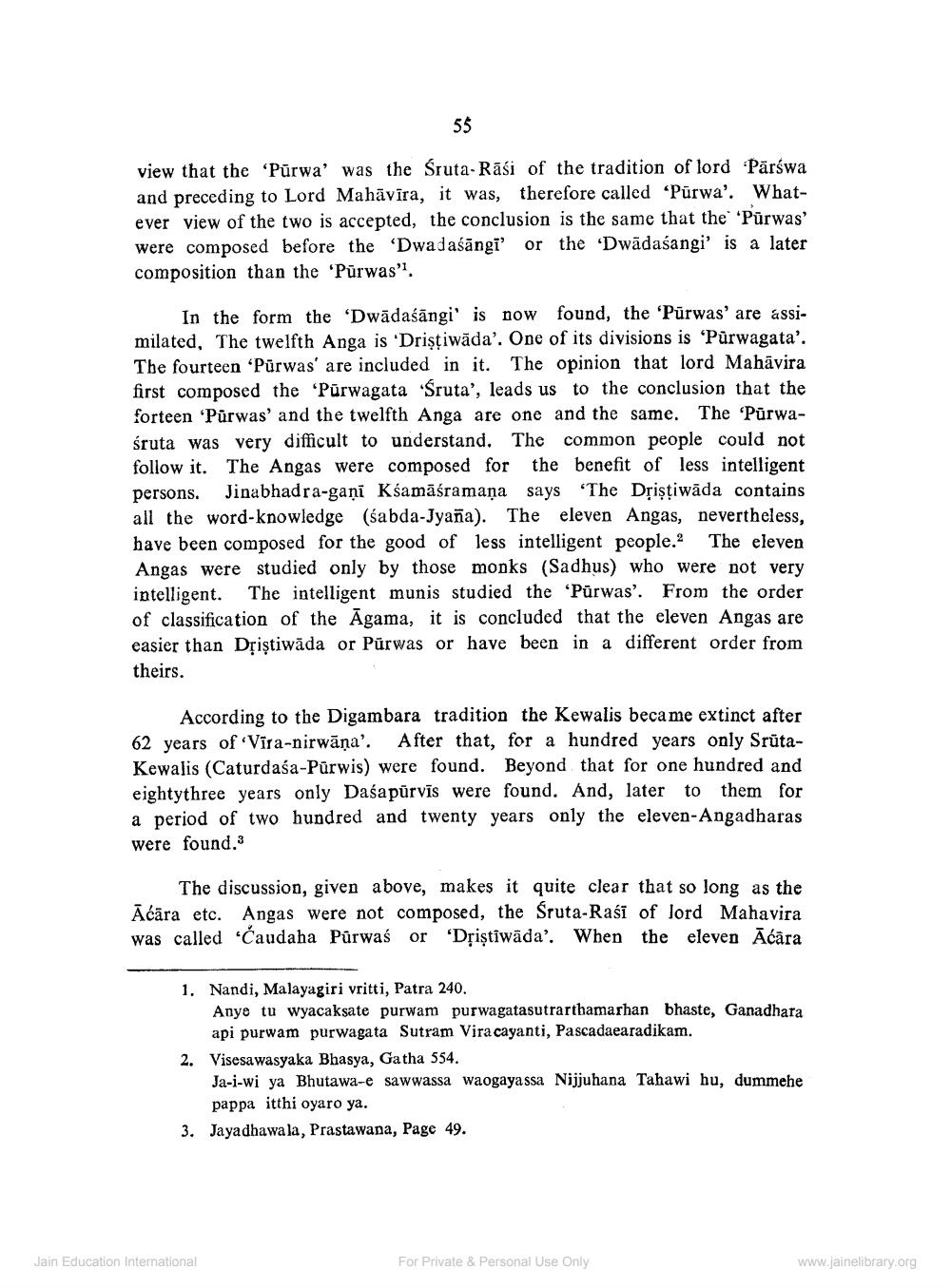________________
55
view that the 'Pūrwa' was the Sruta-Rāśi of the tradition of lord Pärswa and preceding to Lord Mahāvīra, it was, therefore called “Purwa'. Whatever view of the two is accepted, the conclusion is the same that the "Pūrwas’ were composed before the 'Dwadaśāngi' or the 'Dwādaśangi' is a later composition than the 'Pūrwas'.
In the form the 'Dwādaśāngi' is now found, the 'Purwas' are assimilated, The twelfth Anga is 'Dristiwāda'. One of its divisions is 'Purwagata'. The fourteen 'Purwas' are included in it. The opinion that lord Mahāvira first composed the 'Pūrwagata 'Sruta’, leads us to the conclusion that the forteen 'Purwas' and the twelfth Anga are one and the same. The 'Purwaśruta was very difficult to understand. The common people could not follow it. The Angas were composed for the benefit of less intelligent persons. Jinabhadra-gani Kśamāśramaņa says "The Driştiwāda contains all the word-knowledge (śabda-Jyaña). The eleven Angas, nevertheless, have been composed for the good of less intelligent people. The eleven Angas were studied only by those monks (Sadhus) who were not very intelligent. The intelligent munis studied the 'Pūrwas'. From the order of classification of the Agama, it is concluded that the eleven Angas are easier than Dțiștiwāda or Pūrwas or have been in a different order from theirs.
According to the Digambara tradition the Kewalis became extinct after 62 years of Vira-nirwāņa'. After that, for a hundred years only SrutaKewalis (Caturdaśa-Pürwis) were found. Beyond that for one hundred and eightythree years only Daśapūrvīs were found. And, later to them for a period of two hundred and twenty years only the eleven-Angadharas were found.
The discussion, given above, makes it quite clear that so long as the Āćara etc. Angas were not composed, the Sruta-Raśī of lord Mahavira was called 'Caudaha Purwaś or 'Dțiștiwäda'. When the eleven Ācāra
1. Nandi, Malayagiri vritti, Patra 240.
Anye tu wyacaksate purwam purwagatasutrarthamarhan bhaste, Ganadhara api purwam purwagata Sutram Vira cayanti, Pascadaearadikam. Visesawasyaka Bhasya, Gatha 554. Ja-i-wi ya Bhutawa-e sawwassa waogaya ssa Nijjuhana Tahawi hu, dummehe
pappa itthi oyaro ya. 3. Jayadhawala, Prastawana, Page 49.
Jain Education International
For Private & Personal Use Only
www.jainelibrary.org




